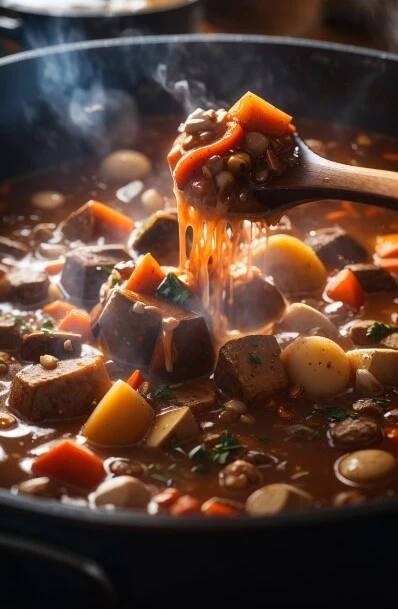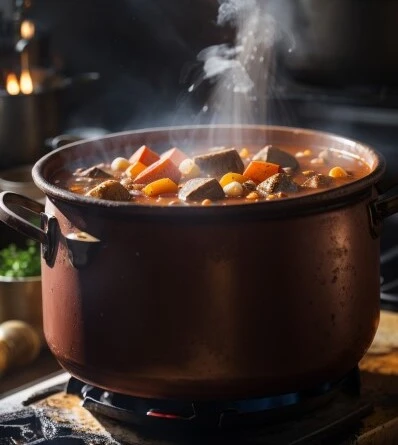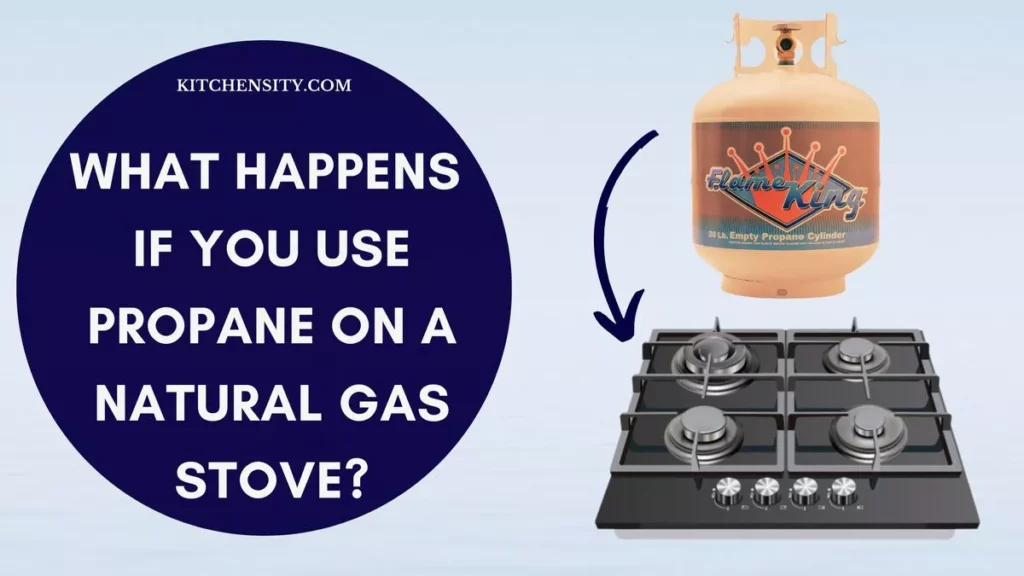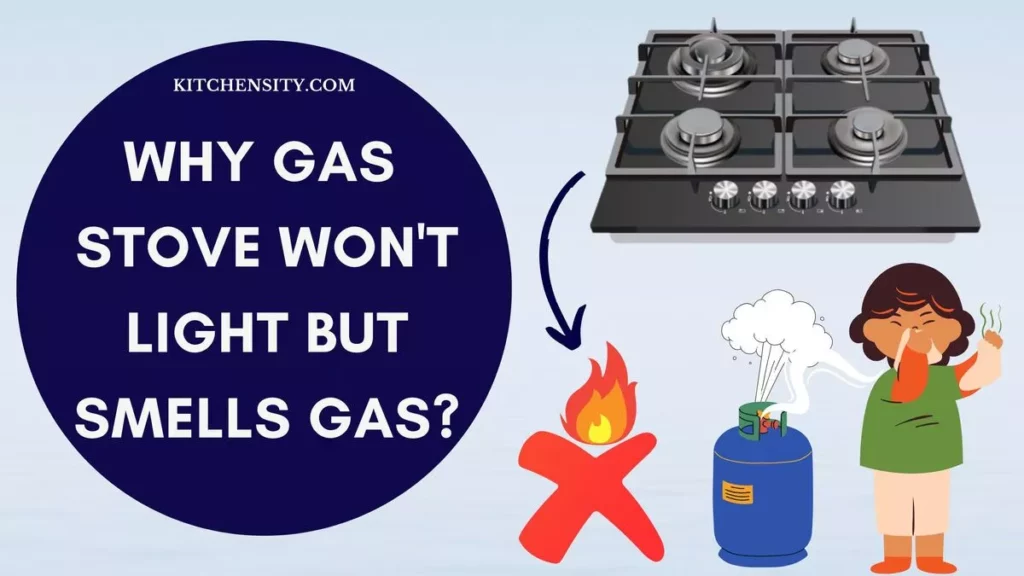Cooking is often seen as both an art and a science, requiring precise techniques and attention to detail to turn simple ingredients into delicious meals. One important technique in this process is simmering. But what does simmer look like and what exactly is simmering?
Simmering looks like small, gentle bubbles rising to the surface of a liquid without any vigorous boiling. It’s a quiet and controlled cooking method where the surface of the liquid remains relatively calm with minimal agitation. The goal is to maintain a constant, gentle heat to cook food slowly and evenly.

Table of Contents
- 1 What Does Simmer Mean In Cooking?
- 2 Is Simmer Low Or Medium Heat?
- 3 How Do You Know If Something Is At A Simmer?
- 4 Do You Simmer With The Lid On Or Off?
- 5 How To Simmer?
- 6 What Does Simmer Look Like In A Pot?
- 7 What Are The Benefits Of Simmering?
- 8 Tips For Perfect Simmering.
- 9 Final Thoughts On Simmering.
- 10 FAQs – What Does Simmer Look Like?
What Does Simmer Mean In Cooking?
In cooking, “simmer” refers to a gentle and consistent cooking technique where a liquid is heated to a temperature just below its boiling point. During simmering, you’ll typically see small bubbles occasionally rising to the surface of the liquid, but it should not reach a rolling boil.
This cooking method is often used to cook various dishes, including soups, stews, sauces, and braised meats. The primary goal of simmering is to maintain a steady and even heat to meld the flavors of the ingredients together while ensuring they are thoroughly cooked.
It’s a slower and more controlled process compared to boiling, which involves rapid and vigorous bubbling. Simmering allows ingredients to become tender, develop complex flavors, and create the rich and harmonious taste that is characteristic of many well-prepared dishes.
Also Read – Is Simmer Lower Than Low?
Is Simmer Low Or Medium Heat?
Simmering is typically done over low to medium-low heat. It’s essential to maintain a gentle and consistent temperature just below the boiling point of the liquid. This usually means setting your stove or burner to a low to medium-low setting, depending on the specific recipe and the type of cookware you are using.
The exact heat level may vary depending on the recipe and the desired outcome, so it’s a good practice to follow the instructions in your recipe for the best results. The key is to keep the liquid at a simmering temperature where small bubbles occasionally rise to the surface without allowing it to reach a rolling boil.
Also Read – What Temperature Is Simmer On An Electric Stove?
How Do You Know If Something Is At A Simmer?
To know if something is at a simmer, look for small bubbles breaking the surface of the liquid. The liquid should be steaming and moving gently, but not vigorously boiling. You might also notice a slight shimmer or movement in the liquid. The temperature for simmering is typically between 180°F to 205°F (82°C to 96°C).

Knowing when something is at a simmer in cooking requires a keen eye and attention to detail. Here are some practical cues to help you determine if a liquid is simmering:
- Look for small bubbles breaking the surface of the liquid.
- The liquid should be steaming and moving gently, not vigorously boiling.
- There should be a slight shimmer or movement in the liquid.
- Maintain a low to medium-low heat setting to achieve a simmer.
- Use a thermometer to check the temperature; it should be between 180°F to 205°F (82°C to 96°C) for a simmer.
Also Read – Should A Slow Cooker Simmer On Low?
Do You Simmer With The Lid On Or Off?
Simmering is typically done with the lid on. This helps retain moisture and allows the food to cook evenly. However, there are times when you might simmer with the lid off, such as when you want to reduce the liquid in a dish or when a recipe specifies to simmer uncovered.
Here are some guidelines to help you decide:
- Simmering With The Lid On:
- Retaining Moisture: Using a lid helps trap moisture in the pot, preventing excessive evaporation. This can be beneficial when you want to keep the dish well-hydrated, like in soups and stews.
- Temperature Control: The lid helps maintain a consistent and even temperature within the pot, which is especially useful for slow-cooking and tenderizing tough ingredients.
- Simmering With The Lid Off:
- Reducing Liquid: If you want to reduce the liquid in your dish to thicken a sauce or concentrate flavors, simmering with the lid off allows for more evaporation.
- Intensifying Flavors: Allowing some of the liquid to evaporate can lead to a more intense flavor in the final dish.
Whether you simmer with the lid on or off depends on your cooking objectives. If you want to maintain moisture and a consistent temperature, use the lid. If you aim to reduce the liquid and intensify flavors, simmer with the lid off.
How To Simmer?
Simmering is a cooking technique that involves heating a liquid to a temperature just below its boiling point and maintaining it at that gentle simmer. Here’s how to simmer:
- Place your pot or pan on the stove over medium-high heat.
- Add your ingredients and enough liquid to cover them.
- Bring the liquid to a gentle boil.
- Reduce the heat to low to maintain a gentle simmer.
- Cover the pot or pan with a lid.
- Let the food cook slowly, checking occasionally to ensure the liquid is simmering gently.
- Adjust the heat as needed to maintain the simmer.
- Cook the food for the specified time, allowing the flavors to develop.
Simmering is ideal for soups, stews, sauces, and braises, as it helps tenderize meats and meld flavors together. It requires patience and attention to detail to maintain the desired temperature and achieve the best culinary outcomes.
Also Read – How To Simmer On An Electric Stove?
What Does Simmer Look Like In A Pot?
When simmering in a pot, you’ll see small bubbles breaking the surface of the liquid. These bubbles are smaller and gentler than those in a rolling boil. The liquid will be steaming, and there may be some movement or slight shimmer in the liquid, but it should not be vigorously boiling. The pot’s contents will cook slowly and evenly in the gentle heat.

Simmering in a pot can be visually identified by several distinct characteristics.
- Look for small bubbles breaking the surface of the liquid in the pot.
- The liquid should be steaming, indicating heat.
- There may be some movement or slight shimmer in the liquid, but it should not be vigorously boiling.
- Check that the heat is set to low to maintain a gentle simmer.
- Use a lid to cover the pot and retain moisture.
- Ensure the pot’s contents cook slowly and evenly in the gentle heat.
“Simmering is a foundational technique in cooking, fundamental to developing depth of flavor and achieving perfect texture in countless dishes.” – Chef Alton Brown
Also Read – Can Induction Pans Be Used On Gas Stoves?
What Are The Benefits Of Simmering?
Simmering offers several benefits in cooking, making it a valuable technique in the culinary world. Here are some of the key advantages of simmering:
- Flavor Development: Simmering allows flavors to meld together and develop depth, especially in soups, stews, and sauces.
- Tenderizing Tough Cuts: Simmering breaks down tough cuts of meat, making them more tender and flavorful.
- Even Cooking: The gentle heat of simmering ensures that food cooks evenly without scorching.
- Moisture Retention: Using a lid while simmering helps retain moisture, preventing dishes from drying out.
- Enhanced Texture: Simmering can help ingredients like beans and grains achieve a creamy or tender texture.
- Convenience: Once you’ve set the heat to maintain a simmer, you can leave the food to cook slowly, freeing you up to do other tasks.
- Richer Broths and Stocks: Simmering extracts flavors from ingredients like bones, vegetables, and herbs, resulting in richer broths and stocks.
- Nutrient Retention: Because simmering occurs at lower temperatures compared to boiling, it helps preserve the nutritional value of foods, such as vegetables, which can lose fewer nutrients during the cooking process.
So, simmering is a versatile and valuable cooking technique that not only enhances the flavor and texture of your dishes but also allows for the creation of complex and delicious culinary creations. Whether you’re making a hearty soup, a savory stew, or a tender braised dish, simmering is a fundamental method that can elevate your cooking to the next level.
Also Read – What Is A Medium Heat On A Stove?
Tips For Perfect Simmering.
Achieving the perfect simmer is crucial for many cooking endeavors. Here are some tips to help you achieve it.
- Start by bringing the liquid to a boil over medium-high heat, then reduce the heat to low to maintain a gentle simmer.
- Use a lid to cover the pot partially or fully to retain moisture and control evaporation.
- Use a heavy-bottomed pot or pan to distribute heat evenly and prevent scorching.
- Avoid lifting the lid too frequently, as this can cause fluctuations in temperature and slow down the cooking process.
- If the simmer is too vigorous, reduce the heat slightly. If it’s too weak, increase the heat slightly.
- If you’re simmering a broth or stock, skim off any foam or impurities that rise to the surface.
- Stirring gently can help distribute heat and prevent sticking, but avoid stirring too often.
- Set a timer to remind you to check the simmer periodically and adjust the heat if needed.
- Simmering is a slow cooking process, so be patient and allow the flavors to develop over time.
- Different recipes may require slightly different simmering techniques, so don’t be afraid to experiment to find what works best for you.
Final Thoughts On Simmering.
So, simmering is a gentle cooking technique where a liquid is heated to a temperature just below boiling. This process is characterized by small bubbles breaking the surface of the liquid, along with steam and a slight shimmer in the liquid. It is ideal for cooking delicate foods, tenderizing tough cuts of meat, and developing rich flavors in soups, stews, and sauces.
When you observe a simmer, you’ll notice small bubbles gently rising to the surface, a minimal surface disturbance, and a steady stream of steam. This technique is distinct from the more vigorous and chaotic boiling.
So, the next time you set out to simmer, keep an eye out for those small, tranquil bubbles, and let them guide you to culinary perfection.
Also Read – Boiling Water On A Gas Stove: Tips & Tricks
FAQs – What Does Simmer Look Like?
-
Is Simmering The Same As Boiling?
No, simmering is different from boiling. Simmering involves gently heating a liquid with small bubbles while boiling is a more vigorous process with large bubbles.
-
Can I Simmer With Any Pot?
While you can technically simmer with any pot, using a heavy-bottomed pot with a lid is recommended for better temperature control.
-
How Do I Know When To Simmer Or Boil In A Recipe?
Most recipes will specify whether you should simmer or boil. Simmering is often used for slow-cooked dishes, while boiling is for rapidly cooking ingredients.
-
What Are Some Dishes That Benefit From Simmering?
Dishes like soups, stews, risotto, and braised meats benefit greatly from simmering.
-
Can I Simmer Without A Lid?
While it’s possible to simmer without a lid, using one helps maintain a consistent temperature and prevents excessive evaporation.
Katrina Smith is a seasoned expert with over 25 years of experience in all things related to cooking and the kitchen. As an avid cook and kitchen enthusiast, she is passionate about sharing her knowledge and expertise on cookware, kitchen appliances, kitchen tips, and kitchen staples.
Through her articles and reviews, Katrina aims to inspire and help others improve their cooking skills, experiment with different ingredients, and invest in quality cookware and appliances.






